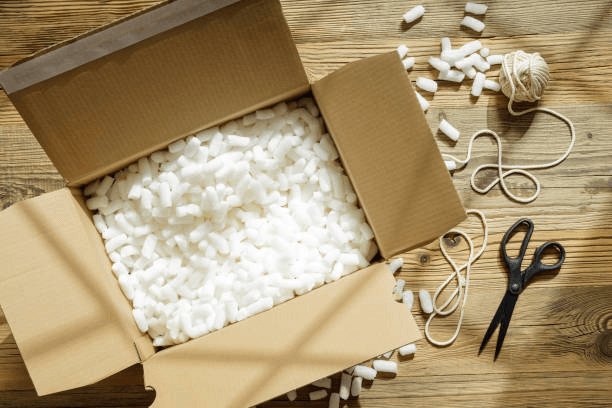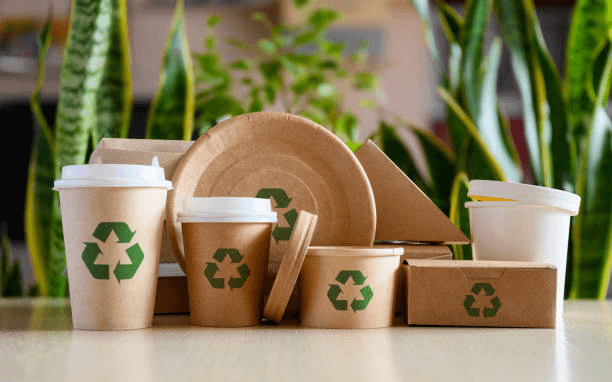Styrofoam, also known as polystyrene foam, is a material that is widely used in our daily lives. From packaging to insulation, it is everywhere. But the question remains: Is Styrofoam Dangerous? In this blog, we will dive into the subject, explore various aspects and try to draw a conclusion.
Chemical Properties of Styrofoam

Styrofoam, the main component is polystyrene.
Styrofoam is a high molecular polymer, and its chemical structure determines a series of its properties. From a chemical point of view, polystyrene has a relatively stable molecular chain structure, but it is this seemingly stable structure that hides some potential problems.
Among them, the styrene monomer contained is indeed a focus of attention. Styrene has a certain volatility and may be released into the surrounding environment under certain conditions. Long-term contact or inhalation of styrene may have adverse effects on human health, such as interfering with the human nervous system and causing discomfort.
In addition, during the production process of polystyrene foam, some incompletely polymerized small molecules may remain, which may also be harmful. Moreover, its chemical properties also make it easy to react with other substances in some cases, resulting in unknown consequences. For example, in a high temperature environment, polystyrene foam may decompose or release some harmful substances. When in contact with certain chemical reagents, it may also deteriorate or produce adverse reactions.
A deep understanding of the chemical properties of polystyrene foam is essential for a comprehensive assessment of its potential hazards and its proper use and disposal. Only by fully understanding the potential impacts behind these chemical properties can we better respond to and prevent possible risks.
Is Styrofoam Dangerous?

Many studies have confirmed that styrene can have negative effects on human health. When in contact with or inhaling styrene vapor for a long time, it is very likely to cause the following problems:
- Breathing problems: It may cause breathing difficulties, shortness of breath, chest tightness, and even respiratory diseases in severe cases.
- Allergic reactions: The human body may experience various allergic symptoms such as skin redness, unbearable itching, and rashes.
- Potential carcinogenicity: Although the evidence of its exact carcinogenicity has not been fully determined, this potential risk still exists and cannot be ignored. After all, the formation of cancer is a complex process, and even if the evidence is inconclusive, this possible threat cannot be underestimated. For people who are frequently exposed to Styrofoam environments, they need to be particularly vigilant and take effective protective measures to minimize the possibility of adverse effects on their health. Future research is expected to further clarify the specific relationship between Styrofoam and health hazards, providing a solid basis for better protection of public health.
Environmental Impact

The non-biodegradable nature of polystyrene foam (Styrofoam) has undoubtedly become a major concern in the field of the environment. It has the characteristic of remaining in the environment for a long time, which has led to a series of problems:
- Pollution of landscape: A large amount of polystyrene foam waste will appear particularly abrupt and eye-catching in the natural landscape after being discarded at will, seriously damaging the beauty and cleanliness of the environment.
- Entering waterways and endangering aquatic life: It may enter waterways through water flow and other channels, be ingested by aquatic life, affect its digestive system, and even cause its death, causing serious damage to the aquatic ecosystem.
- Aggravating the increasingly serious plastic pollution problem: As a type of plastic, polystyrene foam has undoubtedly made the already severe plastic pollution situation worse, increasing the plastic pollution pressure faced by the entire ecosystem.
The negative impact of this non-biodegradable material on the environment is far-reaching and lasting. Over time, it will continue to accumulate and spread, posing an increasing threat to ecological balance and biodiversity. We must attach great importance to the harm caused by polystyrene foam to the environment, actively take effective measures to reduce its use and properly dispose of the waste generated to protect our home planet and ecological environment.
Used in Food Packaging

Styrofoam is often used in the field of food packaging. However, there are also some hidden risks in this application:
- Chemicals penetrate into food: In some cases, some chemicals in Styrofoam may slowly penetrate into the packaged food, posing a potential threat to the quality and safety of the food. In particular, the possibility of such penetration increases during long-term storage or under certain conditions.
- Concerns about the safety of heated Styrofoam containers and the release of harmful substances: When Styrofoam containers are used to hold food and heated, it is even more worrying. Heating may accelerate the release of harmful substances in the container and may affect the stability and safety of the container, which may have adverse effects on human health. For example, harmful substances may enter the food and be ingested by the human body.
In view of these potential risks, when using Styrofoam for food packaging, it is necessary to be cautious and strictly follow relevant regulations and standards to ensure food safety and consumer health. At the same time, we should continue to explore and develop safer and more environmentally friendly food packaging materials to gradually replace Styrofoam, which has potential risks.
Alternatives to Styrofoam
Fortunately, there are some alternative materials that can provide similar functions to Styrofoam without the potential dangers. These include:
Biodegradable packaging materials

These materials can be decomposed by microorganisms in the natural environment, reducing long-term pollution to the environment. They have good protection and applicability, and are an environmentally friendly and sustainable choice.
Recycled paper or cardboard

They are widely available and relatively easy to obtain, and can be produced through recycling. Not only can they serve as packaging, but they are also relatively environmentally friendly and can be a good substitute for Styrofoam in many cases.
With the increasing emphasis on environmental protection and sustainable development, these alternatives are gradually receiving more attention and application. They can not only meet packaging needs, but also effectively reduce the environmental and health problems caused by polystyrene foam, and contribute to building a greener and more sustainable future.
Is Styrofoam Worse Than Plastic?
Styrofoam and plastic both have significant environmental and health impacts, but it is difficult to simply say that one is worse than the other. Styrofoam is non-biodegradable and can persist in the environment for a long time, causing pollution and harm to wildlife. It also has potential issues related to the release of chemicals. Plastic, on the other hand, is a broad category with various types having different degrees of harm. Some plastics can also cause pollution, enter the food chain, and have similar concerns.
The determination of which is worse depends on specific circumstances, usage scenarios, and the overall context. However, both Styrofoam and plastic pose significant challenges in terms of sustainability and require careful consideration and mitigation measures to minimize their negative effects.
Conclusion
The question of whether Styrofoam is dangerous is complex. It does pose certain health and environmental risks, but the extent of these risks is affected by many factors, such as exposure level and specific usage scenarios. Both consumers and related industries must remain aware of these potential issues and make sensible decisions. We should strive to reduce our dependence on Styrofoam and actively explore more sustainable and safe alternatives. The key to the future lies in finding a solution that can balance functionality with environmental and health awareness.
Ultimately, we must be clear about the level of risk we are willing to accept and take effective measures to minimize any potential harm. Styrofoam may not be completely “extremely dangerous”, but it is definitely a material that we need to pay close attention to and think carefully. We cannot turn a blind eye to its potential risks, but should take positive actions to take responsibility for our environment and health and jointly promote the process of sustainable development.
Visit our website for information on styrofoam.
